Deinopsis
James S. Ashe (1947-2005) and Stylianos Chatzimanolis


This tree diagram shows the relationships between several groups of organisms.
The root of the current tree connects the organisms featured in this tree to their containing group and the rest of the Tree of Life. The basal branching point in the tree represents the ancestor of the other groups in the tree. This ancestor diversified over time into several descendent subgroups, which are represented as internal nodes and terminal taxa to the right.

You can click on the root to travel down the Tree of Life all the way to the root of all Life, and you can click on the names of descendent subgroups to travel up the Tree of Life all the way to individual species.
For more information on ToL tree formatting, please see Interpreting the Tree or Classification. To learn more about phylogenetic trees, please visit our Phylogenetic Biology pages.
close boxIntroduction
Species of Deinopsis are small to medium-sized (2.1-4.2 millimeters), teardrop-shaped aleocharines that are found in vegetation, detritus and mud in swampy and marshy areas around ponds, lakes, sphagnum bogs and slow-moving streams. Most species are found in the Holarctic (Nearctic and Palearctic) faunal region, but one species (D. queenslandica) is found in Australia.
Characteristics
Adults of Deinopsis can be distinguished from other Deinopsini by the combination of: 3-3-3 tarsal formula and antennal segment XI without apical papilla. Klimaszewski (1979) provides descriptions, distributional information, illustrations of structural features, and a key for identification of most species of Deinopsis.
Discussion of Phylogenetic Relationships
Klimaszewski (1979) provided the only available phylogeny for species of Deinopsis. Beacuse adults of Deinopsis are externally extremely similar, the phylogeny is based on characteristics of the terminalia and genitalia. This phylogeny indicates that the Australian species (D. queenslandica) is the sister group to all other Deinopsis; the North American taxa (D. rapida - D. texana clade) is a monophyletic lineage, and the Japanese species (D. minor and D. modesta) form a clade with the European species (D. pulawskii and D. erosa). However, this phylogeny contains a number of poorly supported branches and needs reevaluation using modern methods of character and phylogenetic analysis. Later, Klimaszeski (1980, 1982) and Klimaszeski and Frank (1992) described additional new species.
References
Klimaszewski, J. 1979. A revision of the Gymnusini and Deinopsini of the World. Canada Agriculture monograph No. 25. 169 pp.
Klimaszewski, J. 1980. Two new species of Deinopsini from the Afrotropical and Nearctic regions, with notes on two other species of this tribe (Coleoptera, Staphylinidae). Polskie-Pismo-Entomologiczne. 50(1): 109-120.
Klimaszewski, J. 1982. A revision of the Gymnusini and Deinopsini of the World. Sup 2. Can. Entomol. 114(4): 317-335.
Klimaszewski, J. and F. Genier. 1985. A revision of the Gymnusini and Deinopsini of the World. Sup 3. Colepts. Bull. 39(1): 60-66.
Klimaszewski, J. 1985. Revision of the Gymnusini and Deinopsini of the world (Coleoptera: Staphylinidae). Supplement 4. New distribution data and description of female Adinopsis bicornis. Ent. News 96(4):142-144.
Klimaszewski, J. and J. H. Frank. 1992. New distributional data for New World Gymnusini and Deinopsini, with description of a new species (Coleoptera: Staphylinidae, Aleocharinae). Supplement 5. Coleopts. Bull. 46(3): 242-249.
Title Illustrations

| Scientific Name | Deinopsis illinoisensis |
|---|---|
| Location | Kansas, U.S.A. |
| Size | length 3.2 mm |
| Copyright |
© 1997 James S. Ashe (1947-2005)

|
About This Page
Development of this page made possible by National Science Foundation PEET grants DEB 95-21755 and DEB 99-78110 to James S. Ashe.
All images on this page copyright © 1997-2003 James S. Ashe.
James S. Ashe (1947-2005)

University of Kansas, Lawrence, Kansas, USA
Stylianos Chatzimanolis

University of Tennessee at Chattanooga
Page copyright © 1997 James S. Ashe (1947-2005) and Stylianos Chatzimanolis
All Rights Reserved.
- First online 29 August 1997
- Content changed 06 November 2003
Citing this page:
Ashe (1947-2005), James S. and Stylianos Chatzimanolis. 2003. Deinopsis. Version 06 November 2003. http://tolweb.org/Deinopsis/10042/2003.11.06 in The Tree of Life Web Project, http://tolweb.org/





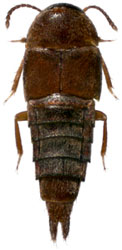
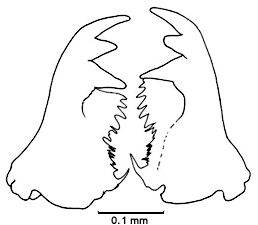
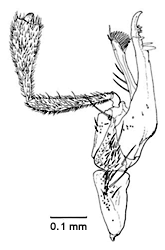
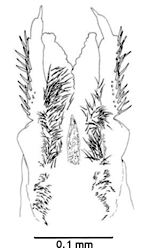
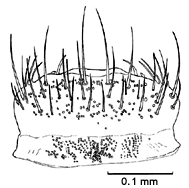
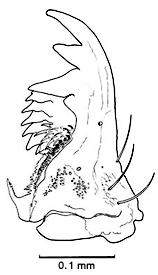
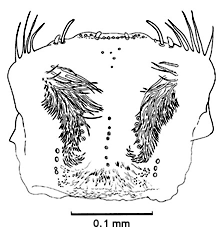
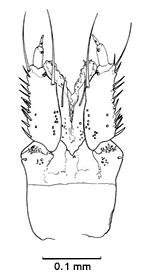
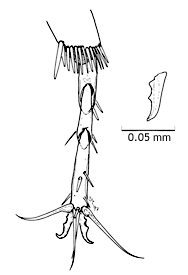


 Go to quick links
Go to quick search
Go to navigation for this section of the ToL site
Go to detailed links for the ToL site
Go to quick links
Go to quick search
Go to navigation for this section of the ToL site
Go to detailed links for the ToL site